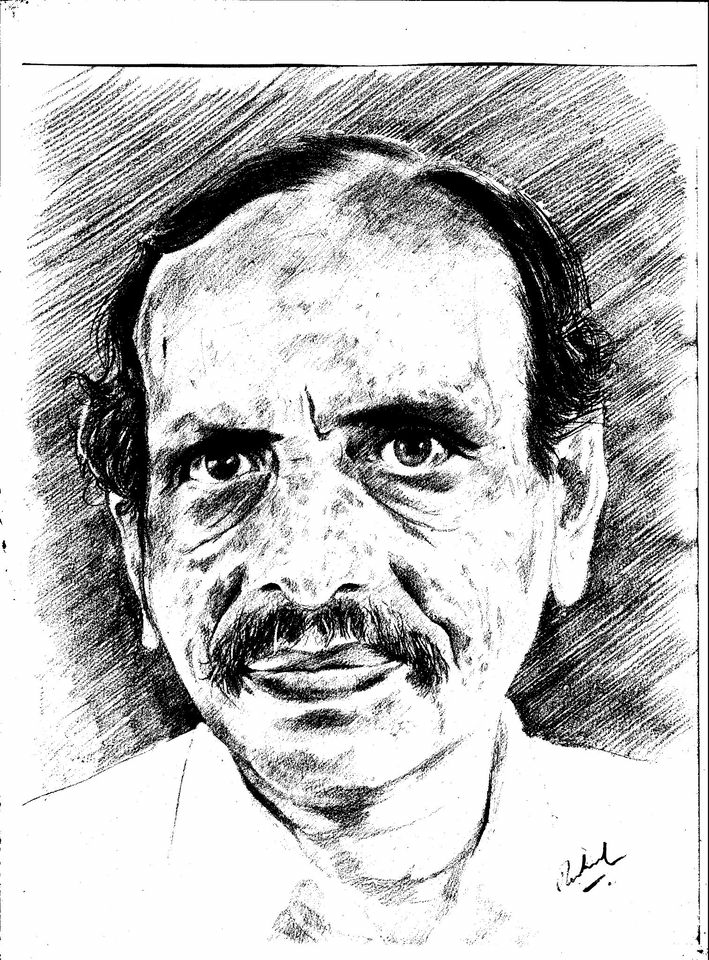Content page
| Title | Name |
Date |
|---|---|---|
[LECS/QM-11] TIme Dependent Sch\"{o}dinger equation |

|
24-06-24 11:06:43 |
[NOTES/QM-12001] Free Particle Energy Eigen functions and Eigen values$\newcommand{\DD}[2][]{\frac{d^2#1}{d#2^2}}\newcommand{\kbf}{{\mathbf k}}\newcommand{\xbf}{{\mathbf x}}\newcommand{\rbf}{{\mathbf r}}\newcommand{\Prime}{{^\prime}}$ The energy eigenvalues and eigenfunctions are obtained for a free particle in one dimension. Properties and delta function normalization are discussed. It is shown that the energy eigenvalue must be positive. The free particle solution in three dimension is briefly given. |

|
24-06-24 09:06:03 |
[NOTES/QM-12004] Free Particle in Three Dimensions$\newcommand{\xbf}{\mathbf x}\newcommand{\kbf}{\mathbf k}\newcommand{\rbf}{\mathbf r}$ The energy eigen functions of free particle are given. These are found to be eigen functions momentum also. The energy eigen functions have infinite degeneracy. There an eigen function corresponding to each momentum direction. |

|
24-06-24 05:06:27 |
[NOTES/QM-11002] Probability Conservation$\newcommand{\DD}[2][]{\frac{d^2 #1}{d^2 #2}}\newcommand{\matrixelement}[3]{\langle#1|#2|#3\rangle}\newcommand{\PP}[2][]{\frac{\partial^2 #1}{\partial #2^2}}\newcommand{\dd}[2][]{\frac{d#1}{d#2}}\newcommand{\pp}[2][]{\frac{\partial #1}{\partial #2}} \newcommand{\average}[2]{\langle#1|#2|#1\rangle} Starting from the time dependent Schr\"{o}dinger equation, an equation of continuity \[{\partial\rho\over\partial t} + \vec{\nabla}.\vec{j}=0\] is derived. Physical interpretation of the continuity equation is given in analogy with charge conservation in electromagnetic theory. The equation of continuity represents conservation of probability in quantum mechanics. |

|
24-06-23 18:06:03 |
[NOTES/QM-11006] Optics Mechanics Analogy Road to Wave Mechanics$\newcommand{\DD}[2][]{\frac{d^2 #1}{d^2 #2}}\newcommand{\matrixelement}[3]{\langle#1|#2|#3\rangle}\newcommand{\PP}[2][]{\frac{\partial^2 #1}{\partial #2^2}} \newcommand{\dd}[2][]{\frac{d#1}{d#2}} \newcommand{\pp}[2][]{\frac{\partial #1}{\partial #2}} \newcommand{\average}[2]{\langle#1|#2|#1\rangle}$ |

|
24-06-23 18:06:17 |
[NOTES/QM-11004] Time Reversal Symmetry$\newcommand{\DD}[2][]{\frac{d^2 #1}{d^2 #2}}\newcommand{\matrixelement}[3]{\langle#1|#2|#3\rangle}\newcommand{\PP}[2][]{\frac{\partial^2 #1}{\partial #2^2}}\newcommand{\dd}[2][]{\frac{d#1}{d#2}}\newcommand{\pp}[2][]{\frac{\partial #1}{\partial #2}}\newcommand{\average}[2]{\langle#1|#2|#1\rangle}$ Time reversal operation in quantum mechanics of one particle is discussed. |

|
24-06-23 18:06:29 |
[NOTES/QM-11003] Schrodinger Equation for a Charged Particle$\newcommand{\DD}[2][]{\frac{d^2 #1}{d^2 #2}}$ Using the classical Hamiltonian and the correspondence rule \(\vec p \to -i\hbar \nabla\), the expression for the Hamiltonian operator for a charged particle is written giving the time dependent Schr\"{o}dinger equation. The Schrodinger equation retains its form under gauge transformations if the wave function is assumed to transform as |

|
24-06-23 18:06:54 |
[NOTES/QM-11001] Time Dependent Schrodinger Equation :Solution for Wave function at time \(t\)$\newcommand{\DD}[2][]{\frac{d^2 #1}{d^2 #2}}\newcommand{\matrixelement}[3]{\langle#1|#2|#3\rangle} \newcommand{\PP}[2][]{\frac{\partial^2 #1}{\partial #2^2}} \newcommand{\dd}[2][]{\frac{d#1}{d#2}} \newcommand{\pp}[2][]{\frac{\partial #1}{\partial #2}} newcommand{\average}[2]{\langle#1|#2|#1\rangle}$ For conservative systems, we show how solution of time dependent Schrodinger equation can be found by separation of variables. Explicit expression for the wave function at arbitrary time \(t\) is obtained in terms of energy eigenfunctions and eigenvalues. |

|
24-06-23 15:06:07 |
[NOTES/QM-11007] Time Variation of Average Values$\newcommand{\DD}[2][]{\frac{d^2 #1}{d^2 #2}}\newcommand{\matrixelement}[3]{\langle#1|#2|#3\rangle}\newcommand{\PP}[2][]{\frac{\partial^2 #1}{\partial #2^2}} \newcommand{\dd}[2][]{\frac{d#1}{d#2}}\newcommand{\pp}[2][]{\frac{\partial #1}{\partial #2}} \newcommand{\average}[2]{\langle#1|#2|#1\rangle}$ Starting from the time dependent Schrodinger equation, it is proved that the average value a dynamical variable \(\hat F\)obeys the equation\begin{equation} {d\over dt}\, \langle \hat{F} \rangle = \,\langle{\partial\over \partial t} \hat{F} \rangle + {1\over i\hbar} \langle\, [\hat{F},\hat{H} ]\, \rangle.\end{equation} |

|
24-06-23 05:06:24 |
[NOTES/QM-10004] Momentum Representation$\newcommand{\DD}[2][]{\frac{d^2 #1}{d^2 #2}} \newcommand{\matrixelement}[3]{\langle#1|#2|#3\rangle}\newcommand{\PP}[2][]{\frac{\partial^2 #1}{\partial #2^2}}\newcommand{\dd}[2][]{\frac{d#1}{d#2}}\newcommand{\pp}[2][]{\frac{\partial #1}{\partial #2}}$ The momentum representation is defined and its connection with the coordinate representations is discussed. The transformation bewteen the two is effected by \(\innerproduct{x}{p}\) which are just the momentum eigenfunctions in the coordinate representation. Delta function normalization and the box normalization is discussed for the momentum eigenfunctions. |

|
24-06-22 11:06:14 |






 ||Message]
||Message]